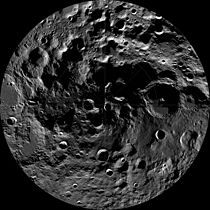~~~~~~~~~~~~~~~~~~~~~~~~~~~~~
WHAT WOULD EARTH BE LIKE
WITHOUT THE MOON?
Would there still be life as we know it? Could humans have developed under those conditions? If so, what would we look like? Would there still be romance if we looked "short, squat and stout," and without moonlight to inspire us?
I was just reading HERE ON EARTH by Tim Flannery. On page 41 he tells how Earth was struck by a body the size of Mars early in its history, "liquefying it and ejecting from it a mass destined to become the Moon. The liquefied reminder then began to differenciate into a metallic core, a silicate mantle, and a thin crust".
I was just reading HERE ON EARTH by Tim Flannery. On page 41 he tells how Earth was struck by a body the size of Mars early in its history, "liquefying it and ejecting from it a mass destined to become the Moon. The liquefied reminder then began to differenciate into a metallic core, a silicate mantle, and a thin crust".
The question is, what kind of planet would Earth be if it had never been struck by a giant object losing mass that became the Moon. Earth would be bigger, of course, but what else would be different?
Illustration above: The libration of the Moon over a single lunar month. Also visible is the slight variation in the moon's visual size from Earth.
Illustration above: The libration of the Moon over a single lunar month. Also visible is the slight variation in the moon's visual size from Earth.
Structure of the Moon
Deseret News - 2012
Life on Earth would be much different without the moon. In fact, it’s safe to say that the large diversity of life we find on Earth wouldn’t exist at all. Without the stabilizing effects of the moon, life on Earth would exist only in small, compact niches.
Life on Earth, without the moon, if it existed at all, would be confined to a narrow band along the equator.
All the plants would be short, deeply rooted and ground-hugging. And any land animal would be short, squat and stout. Birds and any flying insects would be impossible. Ice ages could potentially be 10 times as bad as they have been.
The monthly changes of angle between the direction of illumination by the Sun and viewing from Earth, and the phases of the Moon that result
Charlotte Observer - 2013
Without the moon, Earth would spin faster, the day would be shorter, and the Coriolis force (which causes moving objects to be deflected to the right in the Northern Hemisphere and to the left in the Southern Hemisphere, due to Earth’s spin) would be much stronger.
This would lead to air circulations in the atmosphere that might look more like Jupiter than what we see on Earth today – multiple east-west jet streams and likely more than one big gyre in the oceans. For example, the Gulf Stream would leave our coast far south of Cape Hatteras.
Those circulations might be less effective at moving heat from the tropics to high latitudes, leading to warmer tropics and colder polar regions.
Without the moon, tides would be weaker, affecting the tidal ecosystems for which tidal mixing and flow are important sources of energy. But this seems more like a quantitative effect, not the huge qualitative effect we’d get from a much faster spin. More subtle effects would be on organisms that depend on moonlight and that synchronize their nocturnal activities to the phases of the moon.
This would lead to air circulations in the atmosphere that might look more like Jupiter than what we see on Earth today – multiple east-west jet streams and likely more than one big gyre in the oceans. For example, the Gulf Stream would leave our coast far south of Cape Hatteras.
Those circulations might be less effective at moving heat from the tropics to high latitudes, leading to warmer tropics and colder polar regions.
Without the moon, tides would be weaker, affecting the tidal ecosystems for which tidal mixing and flow are important sources of energy. But this seems more like a quantitative effect, not the huge qualitative effect we’d get from a much faster spin. More subtle effects would be on organisms that depend on moonlight and that synchronize their nocturnal activities to the phases of the moon.
 |
| Moon's North Pole |
 |
| Moon's South Pole |
On a daily basis, we would still have large breakers on the continental west coasts because of the rotation speed of the Earth, storms out at sea, and sloping beaches.
We would still have high and low tides due to the Sun, but these would be half as tall as the lunar high and low tides. There would, however, be no Neap or Spring Tides which occur when the Sun and Moon are on opposite sides of the Earth, or on the same side.
We would still have high and low tides due to the Sun, but these would be half as tall as the lunar high and low tides. There would, however, be no Neap or Spring Tides which occur when the Sun and Moon are on opposite sides of the Earth, or on the same side.
No impacts on the issue of life on the Earth because, if ocean tides were important in getting life started by, for example, mixing up the so-called 'primordial soup', the solar tides ought to have been more than adequate to have done the same thing 3.5 - 4.0 billion years ago. It is possible that the Earth would have been slightly less geologically active.
All Illustrations from Wikipedia
http://en.wikipedia.org/wiki/Moon
All Illustrations from Wikipedia
http://en.wikipedia.org/wiki/Moon
****************************************************************************




No comments:
Post a Comment
Thank you for visiting my blog. Your comments are always appreciated, but please do not include links.